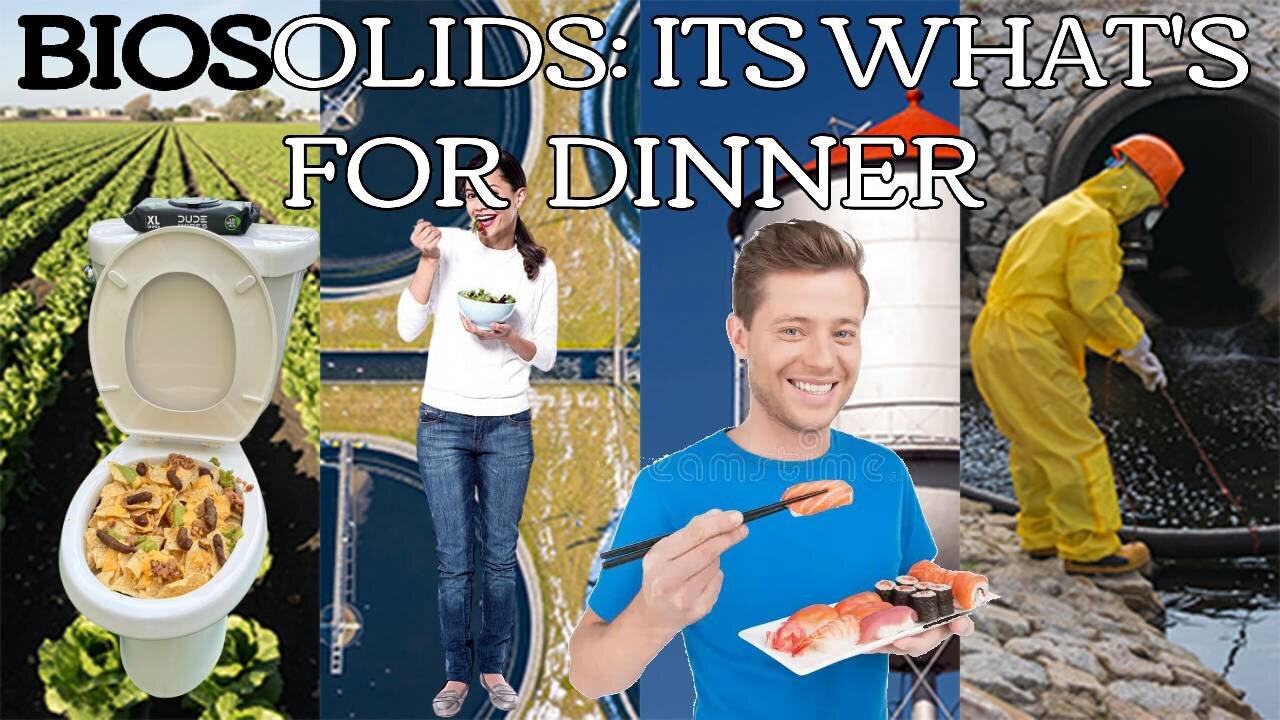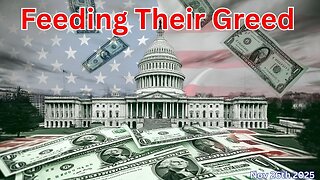Premium Only Content

Biosolids: It’s What’s For Dinner & Mitigation Strategies
Have you come across the latest societal and health concern known as "biosolids"? It's likely that you haven't, primarily because it receives little attention in the media. According to the corporate definition, biosolids are described as nutrient-rich organic materials derived from the treatment of household sewage at wastewater facilities. They are often used to enhance soil and as fertilizers, providing essential nutrients and organic matter for plants. Furthermore, biosolids can be added to compost and are included in some commercial fertilizers.
However, one must question how materials largely composed of "recycled" sewage from various sources—including commercial, industrial, and residential waste, which can contain everything from slaughterhouse byproducts to toxic chemicals—can be deemed safe. It is crucial to note that industrial effluents should not be part of the biosolid mix, while residential waste may be more acceptable, as it typically lacks the hazardous chemicals that industries often discharge in massive quantities.
Critics of the biosolid industry raise valid concerns that chemicals from these materials can leach into the soil and groundwater, where they are taken up by plants and animals. This bioaccumulation can pose serious risks to humans, livestock, and wildlife as these toxins move up the food chain.
While biosolids are marketed as fertilizers, they can carry potential health hazards due to the presence of pathogens and contaminants. These risks include the possibility of food crops becoming contaminated, drinking water being tainted, and inhalation of harmful pollutants. Moreover, some biosolids may contain elevated levels of toxic metals or chemicals, necessitating careful monitoring and management.
-
 2:06:36
2:06:36
Side Scrollers Podcast
3 hours agoThis is the Dumbest Story We’ve Ever Covered… | Side Scrollers
13.9K2 -
 1:13:26
1:13:26
Steven Crowder
5 hours ago🔴 Jay Dyer on Hollywood, The Occult, and the Attack on the American Soul
209K136 -
 DVR
DVR
Sean Unpaved
3 hours agoNFL Thanksgiving Games Are Going To Be ELECTRIC! | UNPAVED
11.9K1 -
 29:07
29:07
The Rubin Report
5 hours agoAre Megyn Kelly & Erika Kirk Right About Our Political Divisions?
43.9K41 -
 27:09
27:09
VINCE
5 hours agoSaving America's Schools with Norton Rainey | Episode 177 - 11/26/25 VINCE
158K86 -
 2:03:57
2:03:57
Benny Johnson
5 hours agoFBI Director Kash Patel Makes January 6th Pipe Bomber Announcement: Massive Breakthrough, Stay Tuned
113K80 -
 1:06:17
1:06:17
Graham Allen
6 hours agoFAKE NEWS Is Everywhere!! Are We Living In The Upside Down?!
167K471 -
 2:59:36
2:59:36
Wendy Bell Radio
9 hours agoFeeding Their Greed
95.3K83 -
 1:55:12
1:55:12
Badlands Media
12 hours agoBadlands Daily – Nov. 26, 2025: Thanksgiving Optics, Turkey Pardons & Global Power Plays
71K12 -
 1:13:11
1:13:11
Chad Prather
21 hours agoGratitude That Grows in Hard Ground: A Thanksgiving Message for the Soul
97.6K46